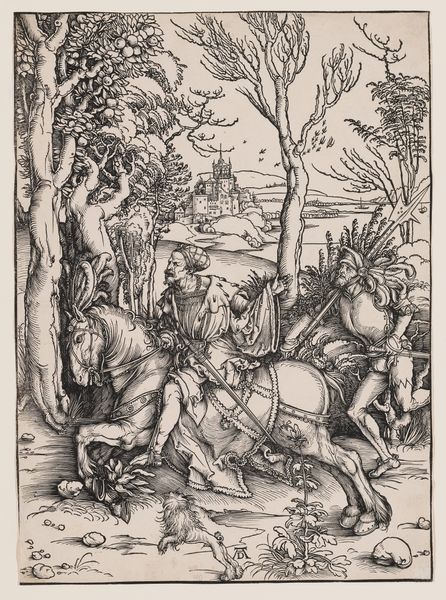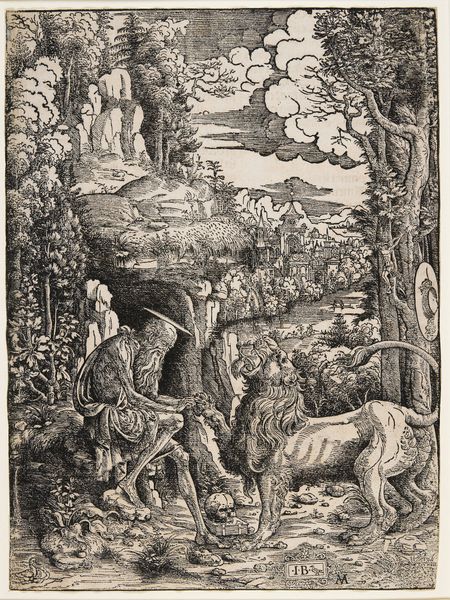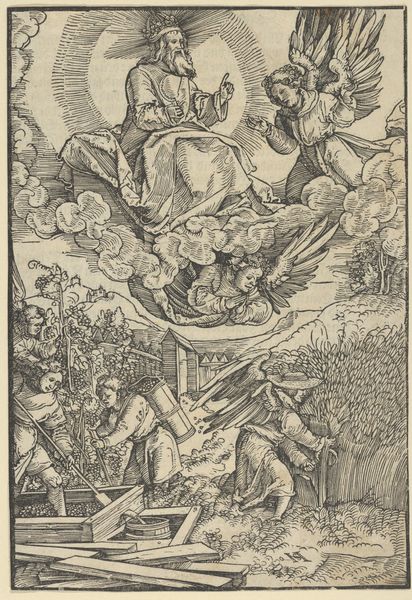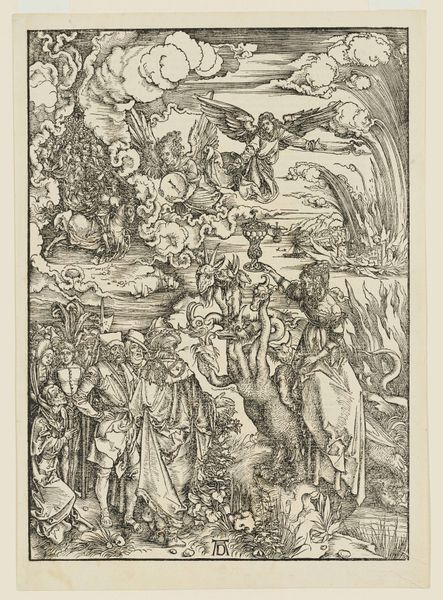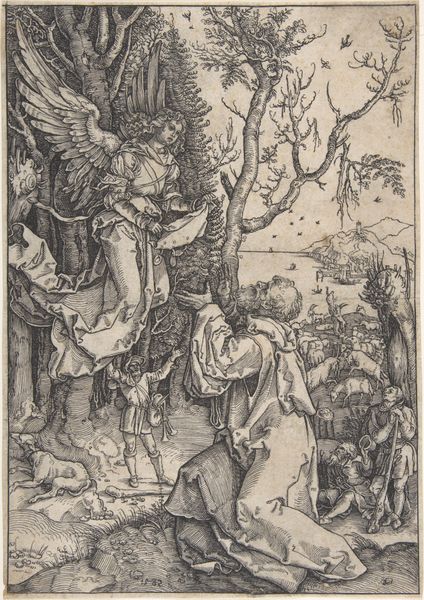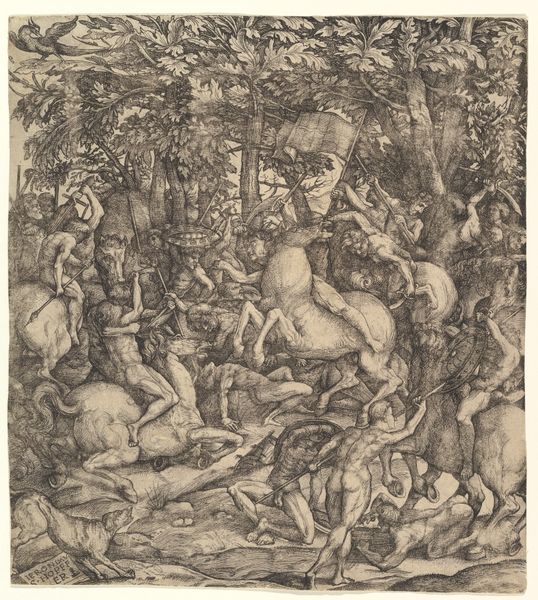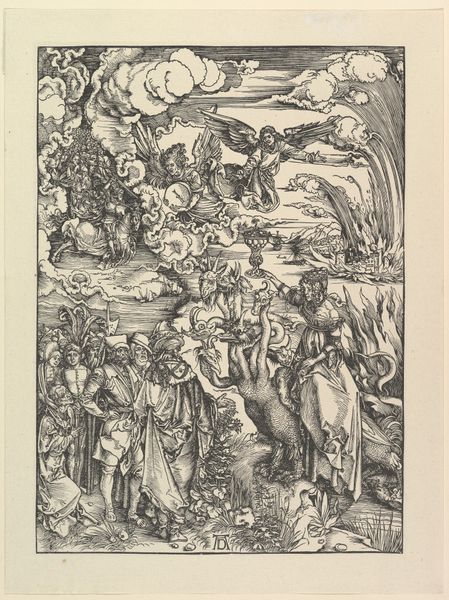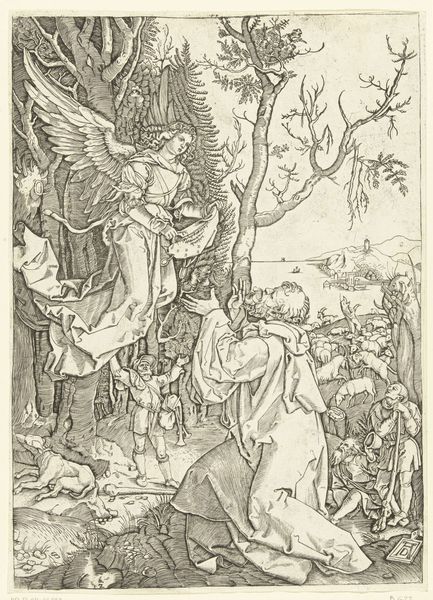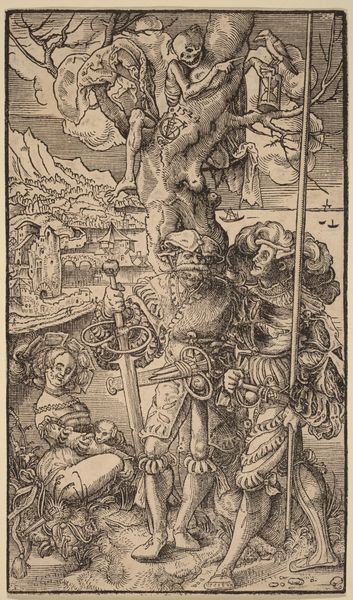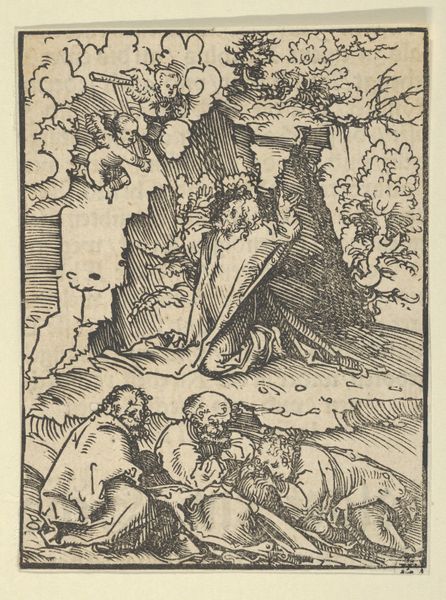
St. George on Horseback Slaying the Dragon 1472 - 1553
0:00
0:00
drawing, print, woodcut
#
drawing
#
pen drawing
# print
#
landscape
#
figuration
#
woodcut
#
history-painting
#
northern-renaissance
Dimensions: Sheet: 6 5/8 × 5 in. (16.8 × 12.7 cm)
Copyright: Public Domain
Curator: This is Lucas Cranach the Elder's woodcut, "St. George on Horseback Slaying the Dragon." The work was produced sometime between 1472 and 1553, placing it squarely in the Northern Renaissance. It’s currently part of the Metropolitan Museum of Art's collection. Editor: My initial impression is one of intense detail. The density of lines, especially around the figures and within the landscape, gives the image a rich, almost claustrophobic feeling. Curator: Yes, Cranach's dense mark-making certainly contributes to the drama. Think about the story itself: St. George, a symbol of Christian knighthood, vanquishing the dragon – a potent image of triumph over evil, of order over chaos. It's rife with political undertones as well. Editor: The dragon is clearly demonic, but its ultimate destruction carries many different symbolic references from greed to untruthfulness. Did people view this as literal history, or metaphor? How conscious was Cranach of these potential associations? Curator: It's impossible to know Cranach's intentions perfectly, but certainly the potency of the St. George narrative lies in its adaptability. The armor, for example, is significant. Consider its protective function but also what the armor obscures. Here, he isn't necessarily portraying religious certainty but, perhaps, earthly authority, military strength. Editor: Note the heraldic shields hanging from the tree – overt signifiers of power. The whole composition draws on a well-known symbolic vocabulary: the defeated dragon as the source of chaos overturned, with its defeated body surrounded by human bones. Curator: Exactly. Cranach skillfully uses these traditional symbols but also infuses them with a palpable sense of dynamism and detail that really grounds the mythical moment in a recognizable world. Editor: It truly underscores how artists during the Northern Renaissance skillfully blended familiar religious and mythical motifs, embedding political and moral undertones accessible to diverse audiences. The appeal of an idealized past remained extremely powerful, clearly. Curator: A potent image reflecting ongoing struggles and ever evolving in cultural meaning! Editor: Precisely. An intense and powerful engagement with symbols deeply embedded within collective memory.
Comments
No comments
Be the first to comment and join the conversation on the ultimate creative platform.


